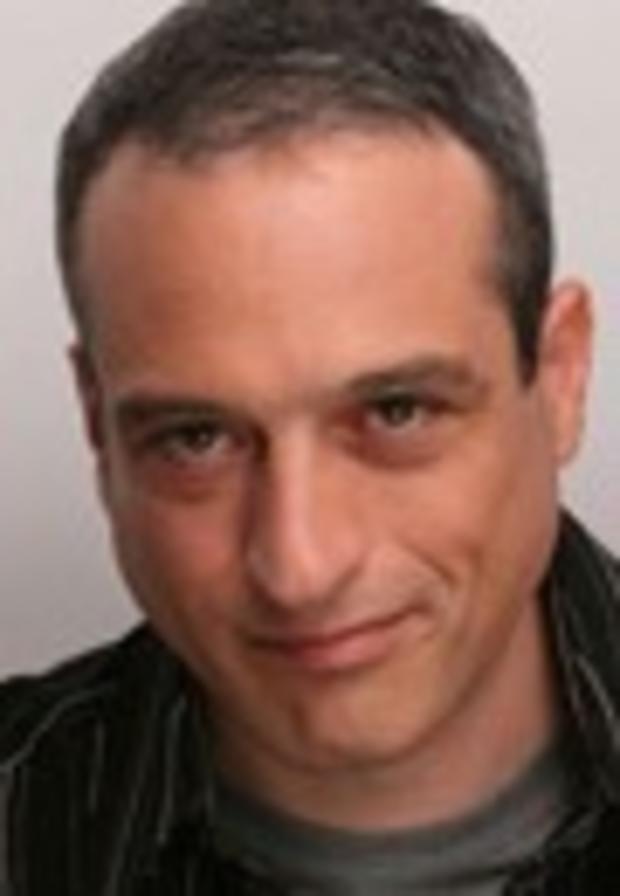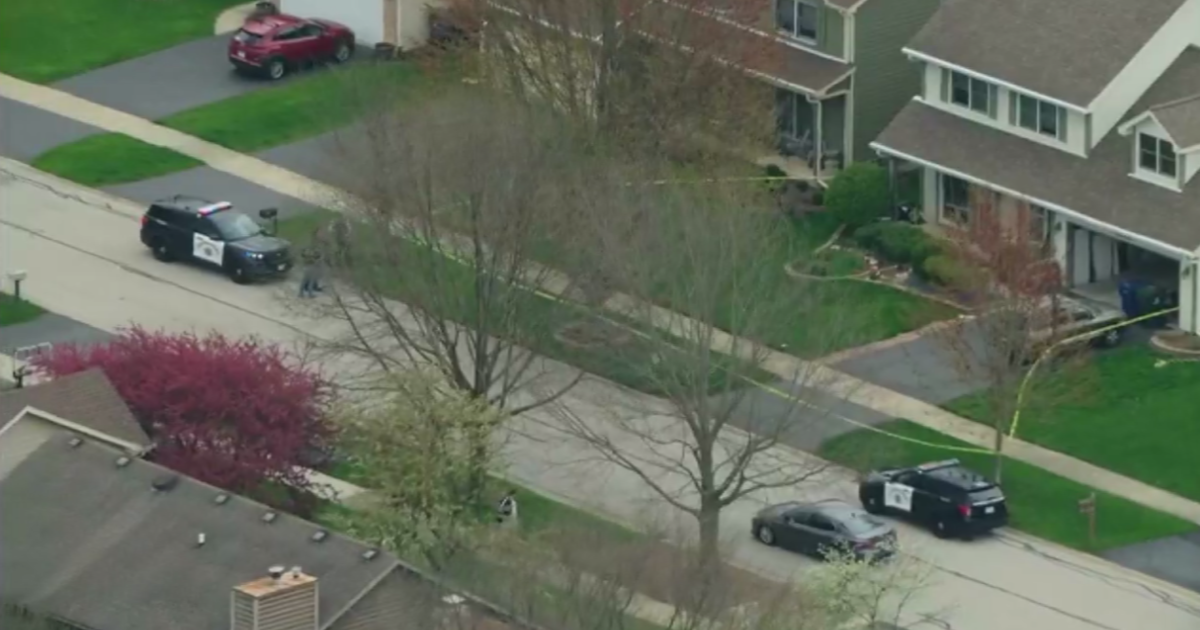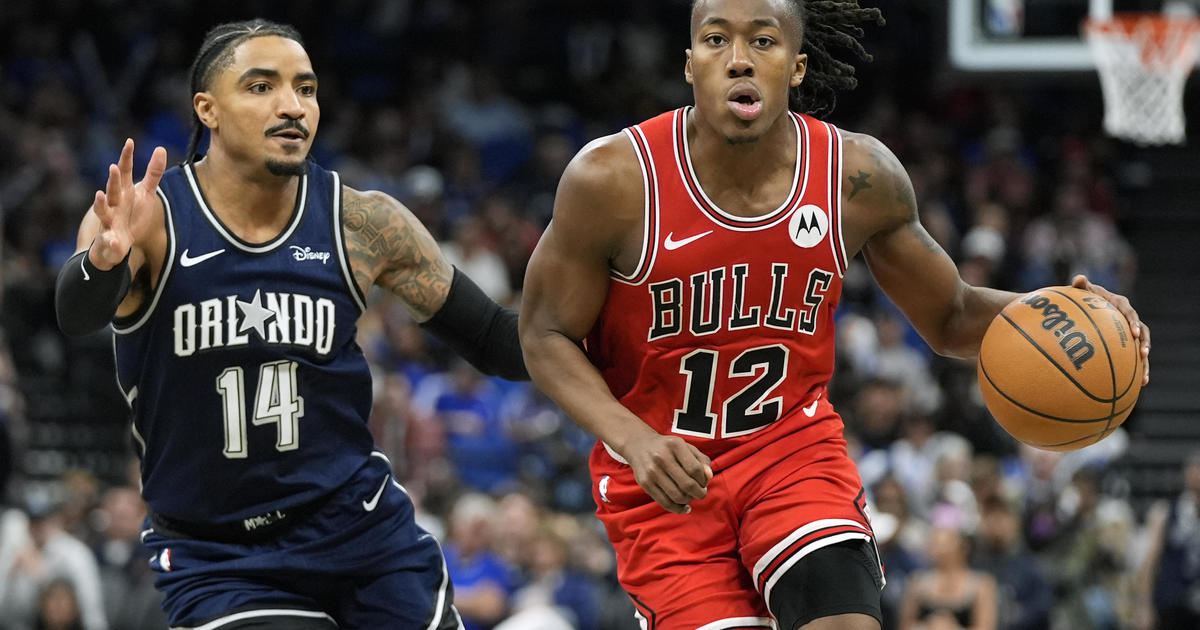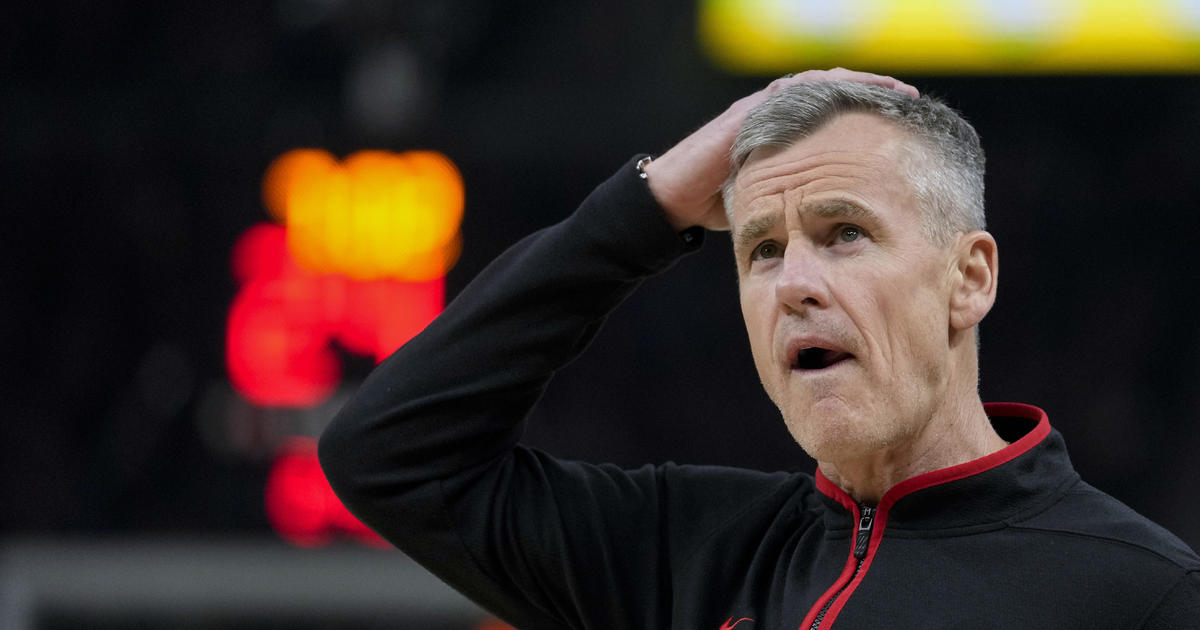Bernstein: Journey Through A Torn ACL
By Dan Bernstein
CBSChicago.com Senior Columnist
(CBS) I like to think I have a pretty good memory, but I'm pleased that it fails me when I think about the exact moment in February of 2002 when my right knee exploded.
It's pretty much gray, as far as recalling what it felt like. That's good.
Three on three at a now-defunct health club in Lincoln Park, the same curl around the same pin-down screen as always, the same crappy left-handed jumper, the same around-and-out as usual, and then the landing that everyone knew was bad, because the pop-crunch was audible.
One of the guys there recalled that I said "ACL. Ice. Hospital." I believe him.
They had a pair of crutches at the front desk, which helped me down two flights of stairs to where my seven-months-pregnant wife waited with the car. The ER doc at St. Elizabeth's shrugged, and said "You probably f---ed youself up pretty good, but there's nothing I can do about it right now." He gave me two Vicodins and sent me home. He would check on me later, as a good cousin should.
Up another two flights of stairs from the garage to the condo, and onto the couch, wondering two things: what did I do to my knee, and how the hell am I going to use the bathroom right now?
***
"Prehab" would come before surgery, according to Dr. Preston Wolin, the accomplished sports orthopedist who was kind enough to fit me into his full schedule. An MRI was planned, but the swelling had to come down.
I visited his office in Old Town, where a hands-on field test told him my ACL was fully ruptured. Any other damage would be discovered by the imaging. He stuck a long needle into the side of my ballooning knee, and drained out bloody fluid to fill a syringe the size of a rolling pin. I was instructed to ride a stationary bike as often as I could. Ice was constant, as were elevation and loads of Vioxx, before they knew it was bad for you. The pain pills were there, but only used to take the edge off an occasional, acute episode.
The MRI revealed the expected – the ACL was gone – and new, fun things: both menisci were torn. The lateral one was damaged but still in place, but half of the medial was flipped back, pinned between the femur and the tibia in what was described as a partial "bucket handle" tear.
The swelling had returned, too. Another needle, another salami-sized syringe filled with blood and whatever. The nurse said I set a new office record for total cc's of drainage. What an honor.
I was introduced to athletic trainer Mike McCormick at Athletico on Diversey, who would be my guide back from the uncertain wilderness of injury, doing a complicated job that entailed coaching, medicine, psychology, and at times -- I thought – torture.
The facility, a street-level rectangle of exercise equipment and examination tables, was a three-block crutch from home, and would be the center of my existence for months, interrupted only by time at home waiting to become a dad, and the four hours on air each day when my leg was propped up and smothered in ice bags at NBC Tower.
"Motion is lotion," was the mantra. Never limp. Gait matters. Strengthen the surrounding muscles. Turn a negative into a positive.
***
I awakened in the harsh glare of surgical lighting, and I was looking inside my own knee.
Per my request, Dr. Wolin brought me out of anesthesia to show me what was going on. He had put me under for the messy stuff, the removal of the middle third of my patella tendon with a plug of bone on either end, which was fashioned into a new ACL with the help of a couple titanium screws.
Now, he was pointing to a monitor, directing the arthroscopic camera to show me the new ligament and what happened to the cartilage.
Bad news and good news, on that front. The meniscal damage could not be repaired, so it was simply resected. Half the medial gone, a third of the lateral. But this meant a less complicated rehab, with no immobilization required to let the cartilage heal. Longer term, I could require another procedure of some kind in 5-7 years, he said, but that could be pushed back or prevented by dropping (and keeping off) any excess weight and maintaining strength in the leg. The knee was now stable, and I was to ditch the crutches as soon as possible.
Home to the couch again, and a couple rough days.
A medical supplier came over to set up a CPM machine for me. This Continuous Passive Movement device cranked my leg in slow circles while I lay in a Vicodin haze. Another machine kept ice-cold water pumping into a sleeve Velcro-ed around the knee, compressing in intervals. I smiled vacantly at the TeleTubbies, listening to the low electrical hum.
I guess I ate. Bathroom trips were a multistage operation of disconnections, deliberately planned movement and reconnections. I grew impatient quickly.
***
You don't know you even have a vastus medialis oblique until it's withered away.
That's what's really unfair about all this, I felt. Building muscle is so difficult, it shouldn't disappear as quickly as it does. I hated looking at my right leg for a long time, the left one sitting there at full strength, mocking its damaged counterpart.
Atrophy's a bitch.
The electric stimulation was hooked up to get muscles firing again after each session, trying to remind them they're there. I saw them moving, but my brain still couldn't seem to get them started as well as those sticky patches with the wires in them.
The bike, the balance-board, "monster-walking" with my ankles bound together by rubber bands, single-leg presses on the pilates reformer. Ice, stim. Range of motion. Motion is lotion. Don't limp. Steady and routine every day, with Mike reinforcing at every turn.
Also at Athletico for much of this was Chris Armas, midfielder for the Chicago Fire and the US national soccer team. Both Wolin and McCormick were working for USA Soccer at the time, and Armas was rehabbing from the same ACL reconstruction, performed by the same guy in the same operating room. I was told my program would be no different from his, as long as I could keep up.
To this day, I think that was an invaluable motivator – the idea that I was expected to mirror the efforts of an elite, professional athlete. It also helped me appreciate the immense difference in what was at stake for the two of us.
My job would not be affected by my return from this injury. I had only missed a few days already, two after it happened and four after the repair. Hell, I could have had the leg removed and still not see any difference in my professional trajectory, since being a smartass talk-show host only requires a voice and a microphone. Not even a brain half the time.
I could not begin to imagine the fear and uncertainty a real athlete felt at such times, and never would presume to try to do so now.
I am, indeed, revisiting my experience in the wake of the news regarding Derrick Rose, but only to provide one perspective. There is no comparison.
***
It's not often the labor and delivery nurses at Prentice Hospital are fetching ice for both parents, but such was the case after our daughter arrived on St. Patrick's Day, three weeks ahead of schedule, two weeks removed from surgery.
So the sleeplessness became part of the rehab cycle, too. In hindsight, the demands of that period may have accelerated recovery, since there was simply no choice but to get on with it. Crutches were long gone, and there were stairs upon stairs– stairs up to bed and down to the kitchen for bottles, stairs down to the street for walking errands, down further to the garage underneath. We had a dog that needed walking, too. Motion and lotion and all that.
Weeks and weeks more of increasing work finally started to bring tangible results. Muscle mass began to return, and proper gait and balance required less thought. Mike was increasing the amount of weight used for all the exercises, and it was considered a victory when a monster-walker could snap one or more of the resistance bands (just like a knee ligament, I thought).
There was still pain, but only amid longer stretches of normalcy. I required a gardening knee-pad to bathe my baby daughter, still, since one of the screws didn't exactly like the tiled bathroom floor. Long periods of standing weren't my favorite, and I had to remember to unlock my knees before the elevator at work moved upward, lest I get a quick meeting of bone and bone on the medial side that would have me sweating by the time the doors opened on six.
Soon it was clear the worst of it was in the past, and that allowed me to attack rehab harder, now that there was real reward. We'd overdo it some days, only to take it easier the next, but feeling like we were back in charge of this thing, dictating the outcome. I weighed 165, just as I did as a college freshman.
Seven months after the reconstruction, I was back in Wolin's office. He had me do a standing broad-jump using my good leg, measuring the distance. He then asked me to do it with my right. If I could stick the landing at or near the same place, I'd be "back," and released from rehab on my own recognizance.
***
Chris Armas was named the MLS Comeback Player of the Year in 2003. He played four more full seasons after that before retiring at age 35.
I have not played basketball, however, other than dribbling around and shooting in an empty gym. I could, but I don't miss it. I don't miss the rolled ankles, the abraded cornea, the jammed fingers or the broken bone underneath my left eye. I also don't want to give any other ligaments or tendons another ample opportunity to make themselves known while competing against those more elastic than I.
The work has never stopped since that right-leg broad-jump in an office hallway. Seven days a week of cardio, weights three days a week, push-ups every Saturday. Almost every exercise is built out from those days at Athletico, with more weight or reps added or new machines used. 163 and steady.
There are still bad days, and there will be more as time and age take their toll, but nothing is keeping me from full participation, at least on my terms. Whether walking mile after mile on the kind of busy, urban vacations we enjoy, golfing, ice skating, or just keeping up with a son who never stops, I rarely think about the knee.
This doesn't really prove anything, other than that with proper dedication and the best care, a regular shmo can eventually get over an injury like this, mostly. And I think there's something about great athletes – real athletes – that gives them awareness and control over their bodies that enable them to return, even as they confront deeper apprehensions and so much hanging in the balance.
I could never claim to know what anyone else is going through, and I never would. I only know what I went through.
Good luck, Derrick.
Dan Bernstein joined the station as a reporter/anchor in 1995, and has been the co-host of Boers and Bernstein since 1999. Read more of Bernstein's columns, or follow him on Twitter: @dan_bernstein.
The Boers and Bernstein Show airs every weekday from 1PM to 6PM on The Score, 670AM (or you can listen online).
Listen to The Boers and Bernstein Show podcasts »




